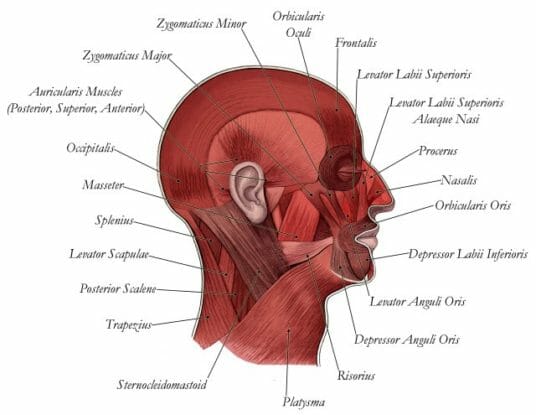A smile can use anywhere between five and 53 facial muscles

A Smile Can Use Anywhere Between Five and 53 Facial Muscles
Have you ever wondered how many muscles are involved when you flash a smile? The answer may surprise you. Contrary to popular belief, smiling isn’t solely a simple movement of the lips. In fact, it requires the coordination and contraction of various facial muscles. While it’s true that a smile can use anywhere between five and 53 facial muscles, the exact number can vary from person to person.

Think about the last time you expressed joy or happiness. You likely experienced a pleasant sensation in your face, with your cheeks lifting and the corners of your mouth turning upward. This seemingly effortless expression actually involves multiple muscle groups. The main muscle responsible for a smile is the zygomaticus major. It extends from the cheekbone to the corners of the mouth, allowing us to lift our lips and create a cheerful grin.
However, the zygomaticus major muscle isn’t alone in its smiling duties. Other muscles come into play as well, including the orbicularis oculi that encircles the eyes. This muscle contracts when we genuinely smile, creating the famous crow’s feet or laugh lines around the eyes. So, if you’ve ever been able to tell whether someone’s smile is genuine or forced, it’s because the eyes play an essential role.

But what about the range between five and 53 muscles? The wide range can be attributed to the complexity and individual variations in muscle usage during smiling. Factors such as genetics, facial structure, and personal habits can affect the number of muscles engaged. Some individuals may have more defined smile lines, while others may have a less pronounced muscle activity when they smile.
It’s worth mentioning that a Duchenne smile, named after the French neurologist Guillaume Duchenne, is considered the most genuine. This type of smile involves both the activation of the zygomaticus major muscle and the orbicularis oculi muscle. The combination creates a full, authentic smile that reaches the eyes. Recognizing a Duchenne smile can be a valuable skill, as it often indicates true happiness or pleasure.
Smiling not only impacts our facial muscles but also has positive effects on our overall well-being. Research shows that the act of smiling can boost our mood, reduce stress, and even strengthen our immune system. Additionally, smiling is contagious, making it an essential tool for social interactions and building connections with others.
In conclusion, the number of facial muscles involved in a smile can range from five to 53, depending on various factors unique to each individual. Whether it’s a simple smile or a genuine Duchenne smile, the act of smiling can have profound effects on our emotional and physical well-being. So next time you feel the urge to smile, embrace it and let those muscles work their magic.
Source: Amboy Orthopaedic Clinic
Tags
Share
Related Posts
Quick Links
Legal Stuff

